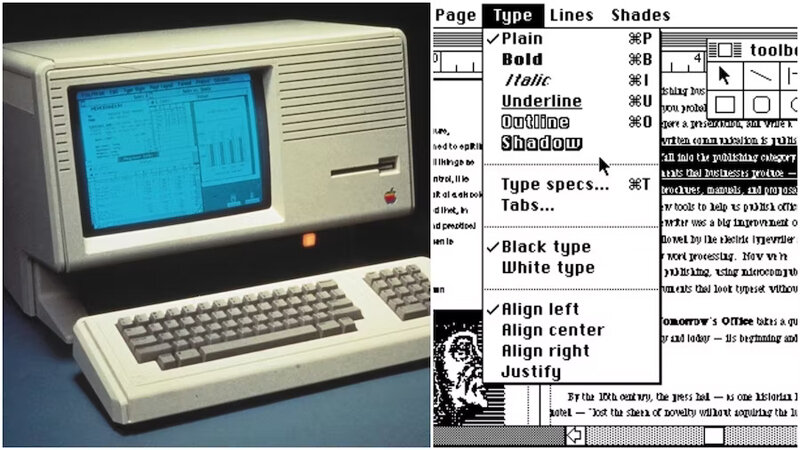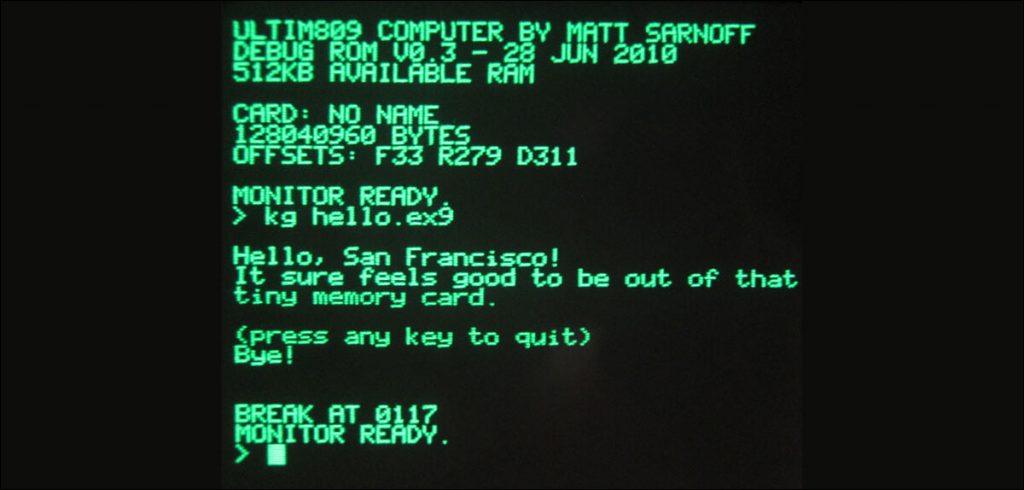Ever wondered how fonts can impact the very development of technological progress? Uma Iyer explains how fonts changed the movement of technology itself.
Think about reading a full article in the font above and typing hundreds of commands to get to the article you are reading. The fact is that we take many things for granted.
One of the most important aspects of anyone getting to an article and reading it has a lot to do with not only how it’s structured, but subconsciously how it renders on a device as well.
Technology currently would be very different but for the evolution of fonts. How a poster looks and what it says has a lot to do with the fonts and how the text interacts with us.
Handwriting was an important aspect of my growing up days because that is how people perceived each other! As technology progressed, fonts did too, but they were often overlooked.
Vector Graphics
The secret sauce for the Digital fonts we see today are Vector graphics. It is scalable and detailed and can be ported to different devices. TrueType and OpenType helped distribute the fonts.
Responsive design
‘Responsive fonts are designed to automatically adjust their size and spacing to fit the screen size and resolution of the device they are being viewed on. This is important for ensuring that text is legible and easy to read on a wide variety of devices, including smartphones and tablets.
Web-optimized fonts are designed specifically for use on the web and are optimized for fast loading times and smooth rendering. This is important for ensuring that text is legible and easy to read on the web, especially on slow or unreliable internet connections.’ – Anna Myer (Graphic designer)

Steve Jobs and his contribution to fonts
Steve Jobs (CEO Apple Inc.) dropped out of his classes to learn calligraphy, and his interest in beautiful text and his penchant for attention to detail and design. And this was reflected in his approach to fonts. Jobs believed that typography was an important element of design and that it could be used to create a sense of personality and emotion.
In the early days of Apple, Jobs worked closely with typographer Susan Kare to create a set of original fonts for the Macintosh, including Chicago, the system font for the Macintosh operating system from 1984 to 1997. Chicago was designed to be legible and easy to read on a computer screen. It was widely regarded as a revolutionary font at the time of its release. All the other fonts were also interestingly names of cities like Venice, New York, etc.
Who knew adjusting the space between letters could create visually pleasing letter combinations! Jobs really liked the use of Helvetica, a widely used Sans-serif font, throughout Apple’s branding and marketing materials. He believed that Helvetica conveyed a sense of simplicity and elegance, and he used it extensively in Apple’s advertising and packaging.
Fonts and its future
Over 200,000 fonts exist in the world. While Microsoft used Times New Roman as default font, they moved on to using Calibri for its simplicity.

Fonts can be used for people with dyslexia and other mental conditions (E.g. Helvetica, Comic sans, etc.). Fonts do make an impact on an article and also have an impact on cognitive functions. Sans-serif fonts such as Arial or Verdana can make text more legible and easier to read, which can help reduce eye strain and improve reading comprehension.
AI has gone one step further, AI-powered font-creation tools, for example, can automatically generate new fonts based on a set of parameters, such as style, weight, and spacing. This makes it possible to create new and unique fonts quickly and easily.
What started as Westminster font, a printing and display typeface inspired by the machine-readable numbers printed on cheques and designed by Leo Maggs has come this far. Let’s see where AI takes us with how to read and perceive the world through the world of fonts!
In case you missed:
- Is Agile Dying?
- Integration of AI in Resume Screening and Battling White Lies
- An interview with Google Labs
- Is Dynasty Succession Dying in Technology Business or is it a Facade? Reliance, Tata, Infosys and more
- Assisted Intelligence – Are Assistants a thing of the past?
- ‘Art’ificial Intelligence
- Emails – 20 years on..will anything change?
- Are feeds feeding us?
- Diabetes – Pricking problem no more
- Identifying Human vs. AI Output, Hacks to Beat the Test









